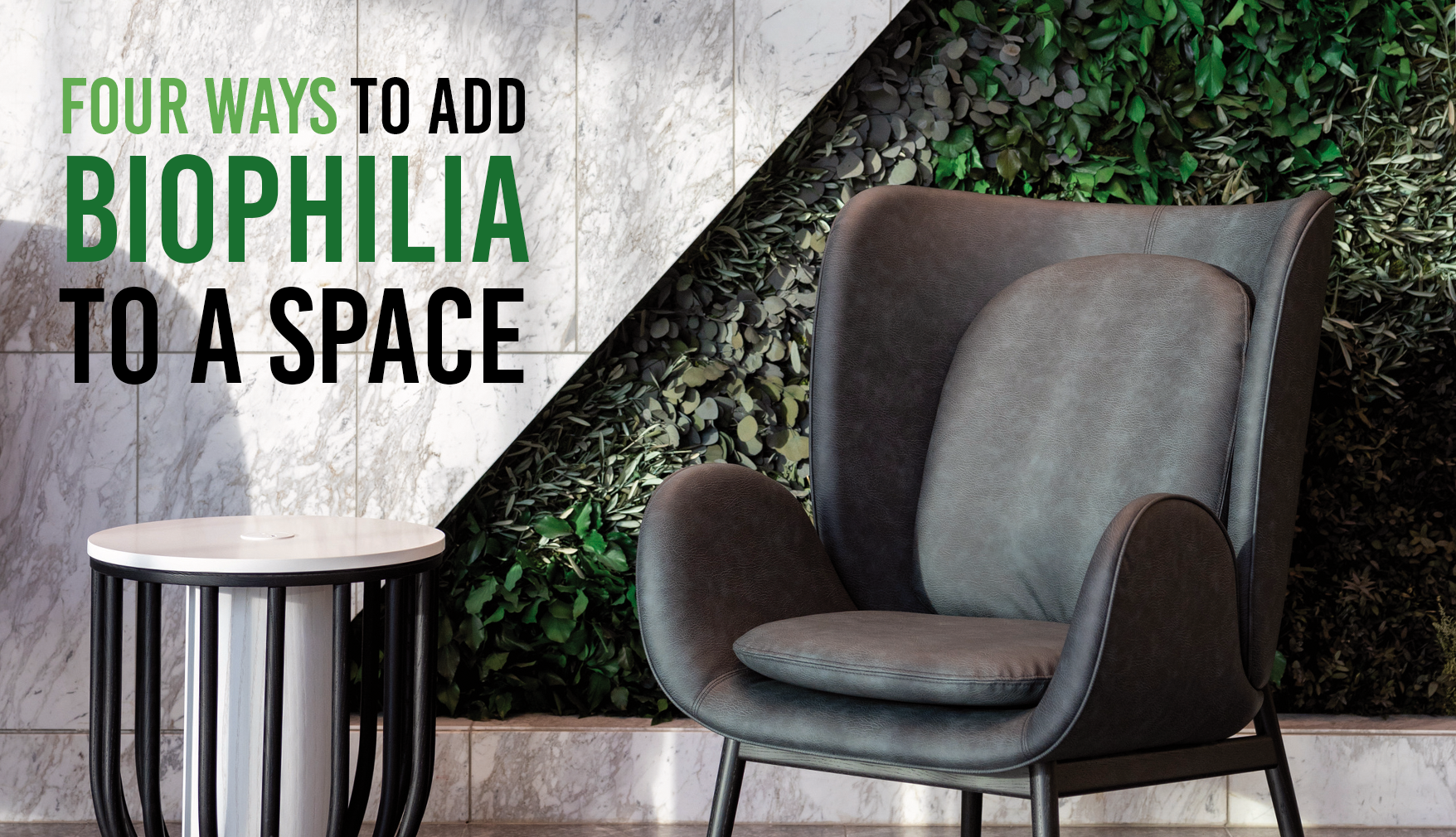Humans strive to connect with nature, and studies show biophilic elements can enhance health, performance, and well-being. These are just some of the many reasons we are seeing an increase in use in office, mixed-use, higher education, hospitality, and residential properties.
Commercial interiors were previously trending towards a more ‘resi-mercial’ design, which brought the comforts of home into the workplace through furnishings and fixtures,” says Valerie Haase, Senior Associate in the Interior Design Studio. “As designers, we now know that while comfort is always a plus, this can be integrated with research-backed theories to provide a built environment that can provide relief from stress by creating a space that is more than just aesthetically pleasing.”
Biophilic design stretches beyond just earth tones; biophilic elements and attributes can be flexibly designed to mold into modern, unique environments and reinforce other placemaking details, like logos or color schemes. Here are a few ways to add biophilia to any design:
Live Planting
Live plants carry the ultimate wellness benefits because they increase air quality by removing humidity as well as pollutants like formaldehyde and benzene. Greenery has also been associated with raising moods and reducing sick days. These mental health benefits can even translate to higher productivity on the job. While adding live plants can be a pricier addition to a space, both in the initial installation and maintenance costs, plants can last about 25 years, making them a lasting addition to the design of a space. Cooper Carry can provide vendor recommendations for plant maintenance to make sure that the bloom doesn’t go out of the design.
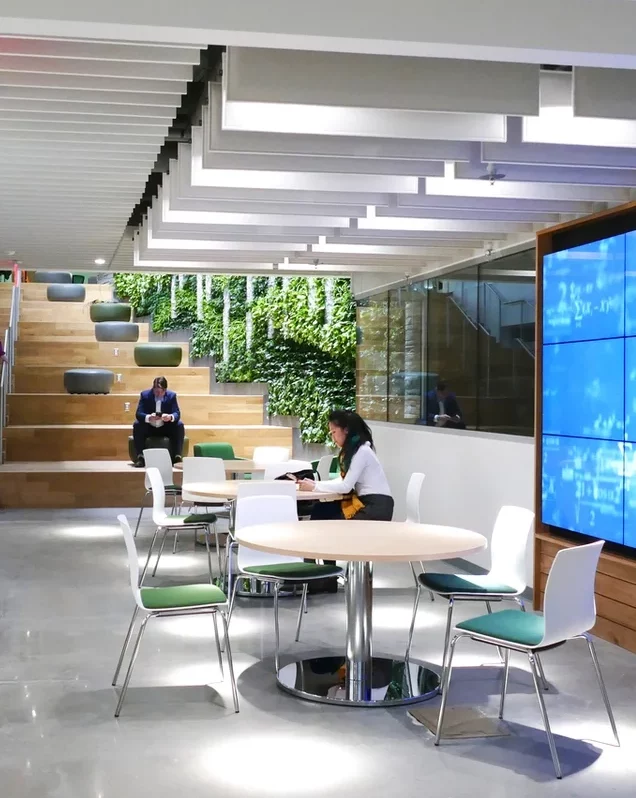
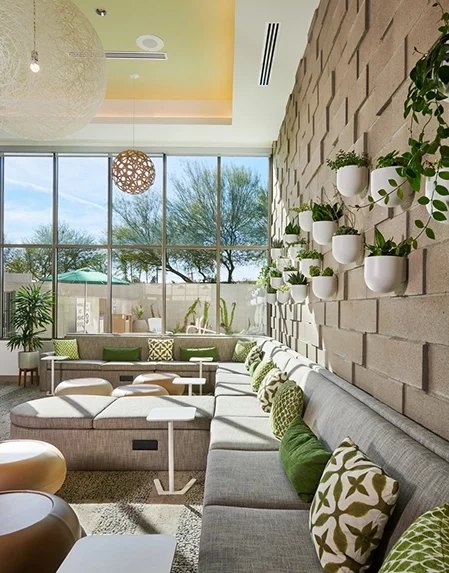
Preserved Plants
Looking for the beauty of plant life without the maintenance issues? Preserved plants have undergone a process that keeps their freshness and beauty, while eliminating the need for water and light (though not the occasional dusting). While preserved plants offer no health benefits and many of these options will need to be replaced after about 10 years, they still fulfill that need for nature and promote relaxation.
We used preserved plants at Midtown Union to reflect Atlanta’s nickname, The City in the Forest. The arrival experience features a massive triangle-shaped preserved plant display behind the reception desk. The split-level lobby is connected by a staircase and platform seating that can be used to host large speaking engagements, or as a flexible working and lounge space throughout the day. Interior greenery mimics the exterior landscape and surrounds the seating. Check out our LinkedIn for more details on this project.
Like preserved plants, silk flowers are finding a renewed place in interior design. Modern flower options and colors can reinforce the nature of a space and tie into other biophilic elements.
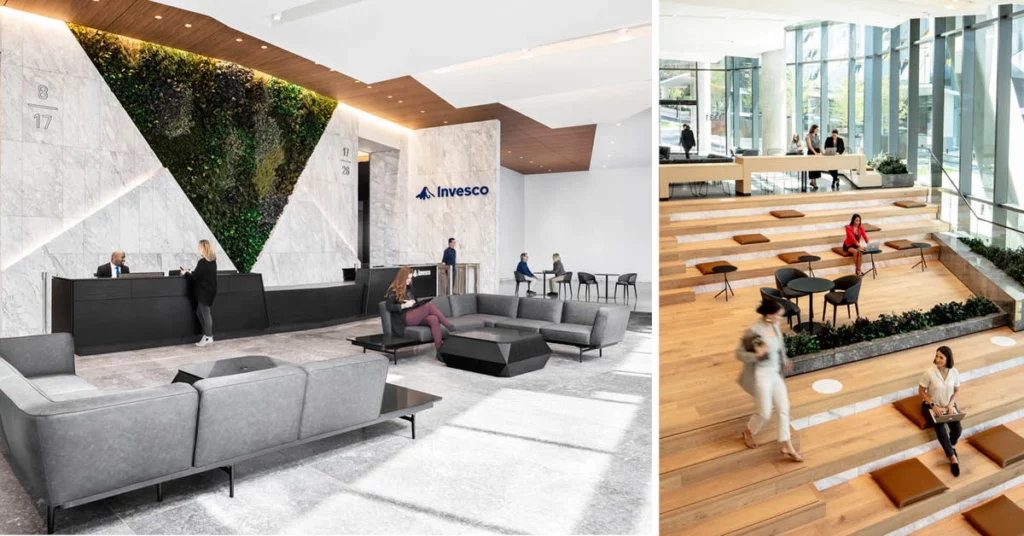
Water Features
Attractive water features can increase the value of a space, along with the length of tenant stay. Water features can provide a gathering space for conversation, a separate area for working, or the perfect backdrop for a social media post. Water also contributes to the wellness of the space by improving air quality once the water evaporates. The sound of water can provide a sense of calm by masking distracting sounds.
While maintenance costs are associated with water features, alternatives exist to provide some of the same benefits at a more cost-effective level. Enclosed bubble walls give the look of an indoor water feature without the mess and high maintenance costs. Bubble walls use color-changing LED lighting controlled by a remote, so users can choose one or a sequence of colored, soft-glowing light. The controller can also be used to manipulate the air release mechanisms, creating different bubble release patterns.
We installed a bubble wall at the Dylan tower of Carlyle Crossing, as the initial design concept leaned heavily on colors, textures, patterns, and motifs from nature. Incorporating the bubble wall was a fun, playful way to bring water and the soothing sound of bubbles into the double-height space, establishing an unforgettable design statement.
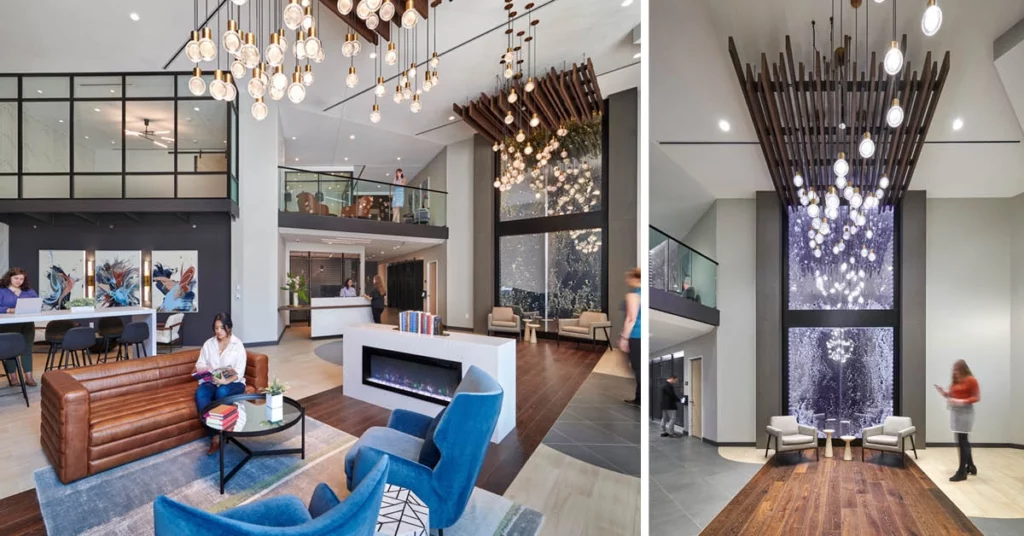
Incorporating Natural References
Greenery is only one level of biophilia. The goal is to stimulate all of the senses, through other elements like auditory or tactile experiences,” says Haase. “When working with clients, it is a balance of choosing options that are within budget and can be maintained long term, so they have the maximum value and impact for the users of a space.”
Utilizing nature-inspired forms in the architecture signal a feeling of nature, such as through waving, undulating lines and organic patterns. Sound masks distracting noises, and more companies are integrating varying types of white noise to add subtle, yet health-focused tones to the office. Sound can play a role in supporting a connection to nature, with establishments pumping in background music like water rushing, birds chirping, or wind blowing.
Visual connections to nature can be provided through strategically placed amenities. Daylighting studies can ensure optimal sun levels for users, allowing them to enjoy the views from large windows without becoming overly hot in the space. Occupants can take advantage of natural landscapes, allowing them to see the rhythm of the day and of the seasons as they change. Planning for views is a cost-effective way of ensuring good health.
Surrounded by a lush canopy of foliage, at Lyra by Radius we were tasked with emphasizing the natural surroundings by considering the views from every angle of the building. The goal was to highlight the ever-present greenery of the landscaping or the central amenity pool deck. To do so, we utilized interior planters and glazing partitions as a way for the spaces to feel divided yet connected.
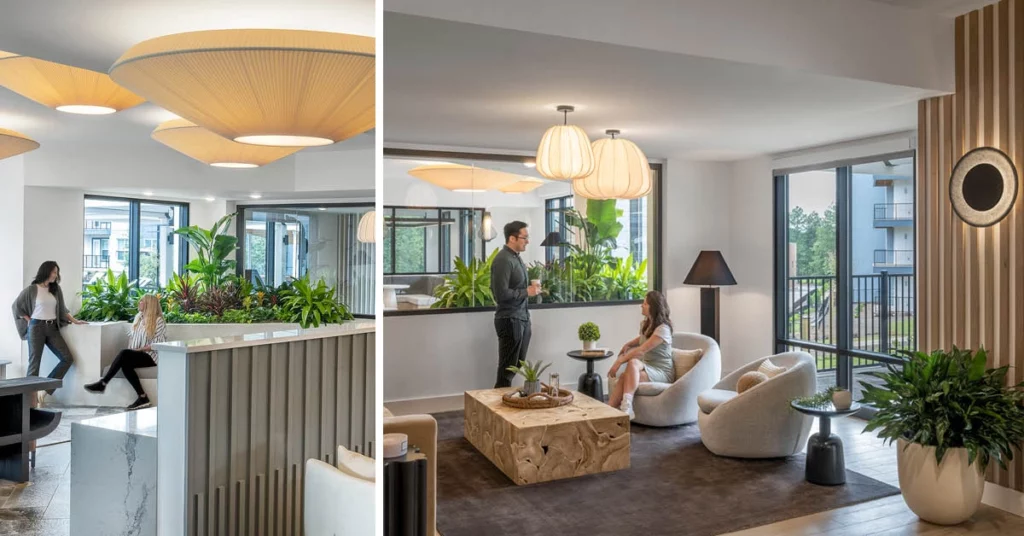
Learn more about how Cooper Carry can use biophilia to enhance your interiors here.
